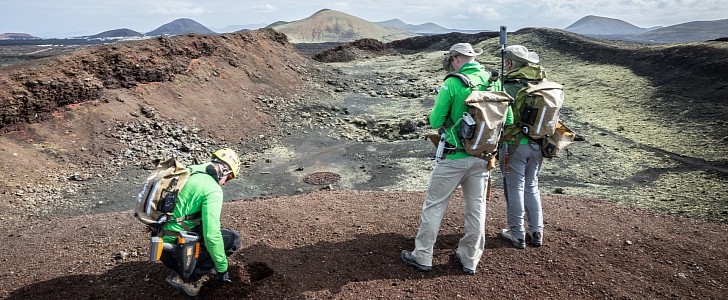Spain's Canary Islands, one of Europe's volcanic hot spots, is the chosen location this time. As part of the European Space Agency's (ESA) Pangea training course, a team of astronauts, engineers, and geologists will explore the islands to prepare for future missions on Moon and Mars.
The course, named after the ancient supercontinent, seeks to train astronauts for missions to other worlds. Participants include ESA astronaut Andreas Mogensen, ESA engineer Robin Eccleston, and NASA astronaut Kathleen Rubins, who is part of the crew of astronauts that NASA chose to send to the Moon with the Artemis program.
Studying lunar geology is crucial for establishing a long-term presence on our natural satellite, and the best place to learn how to explore the lunar terrain is right here, on Earth. The participants will analyze the chemistry and mineralogy of the soil and choose their own exploration routes. They will have to constantly communicate with the science and training teams and report their activity.
Lanzarote, one of the Canary Islands, is one of the spots that participants will study. Since its volcanic landscapes are well-preserved, exploring it will be like walking into a natural museum. The basaltic lava flows from the region resemble vast plains on the lunar maria (aka the dark spots we see on the Moon), and the volcanoes from Lanzarote are similar to those in some regions of Mars.
The rocks, although they might not mean anything to many, they're actually telling the history of the planet. Their composition is what guides scientists to search for signs of ancient lakes or volcanoes.
Studying the volcanic areas from the Canary Islands is vital to understanding how the surface of other planets was shaped by volcanoes. The Moon shows signs of extensive past volcanic activity, and Mars, although now is a cold desert, was once an active planet that had its surface molded by volcanic activity.
This is not the first time astronauts are using Earth's geology to learn about conditions on other planets. Periodically, groups of astronauts are trying to simulate conditions on other planets here on Earth in preparation for real space journeys. Recently, a six-member field team dressed in spacesuits went on a three-week mission inside a massive crater in Israeli's Negev desert to simulate life on Mars.
Studying lunar geology is crucial for establishing a long-term presence on our natural satellite, and the best place to learn how to explore the lunar terrain is right here, on Earth. The participants will analyze the chemistry and mineralogy of the soil and choose their own exploration routes. They will have to constantly communicate with the science and training teams and report their activity.
Lanzarote, one of the Canary Islands, is one of the spots that participants will study. Since its volcanic landscapes are well-preserved, exploring it will be like walking into a natural museum. The basaltic lava flows from the region resemble vast plains on the lunar maria (aka the dark spots we see on the Moon), and the volcanoes from Lanzarote are similar to those in some regions of Mars.
The rocks, although they might not mean anything to many, they're actually telling the history of the planet. Their composition is what guides scientists to search for signs of ancient lakes or volcanoes.
Studying the volcanic areas from the Canary Islands is vital to understanding how the surface of other planets was shaped by volcanoes. The Moon shows signs of extensive past volcanic activity, and Mars, although now is a cold desert, was once an active planet that had its surface molded by volcanic activity.
This is not the first time astronauts are using Earth's geology to learn about conditions on other planets. Periodically, groups of astronauts are trying to simulate conditions on other planets here on Earth in preparation for real space journeys. Recently, a six-member field team dressed in spacesuits went on a three-week mission inside a massive crater in Israeli's Negev desert to simulate life on Mars.






